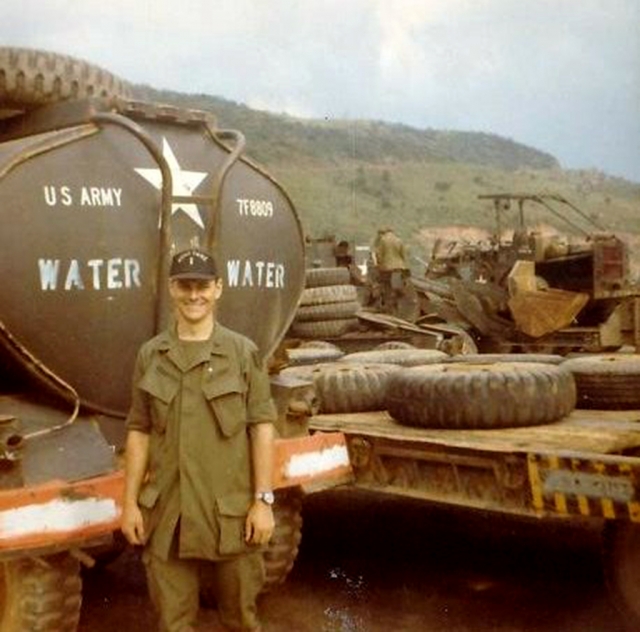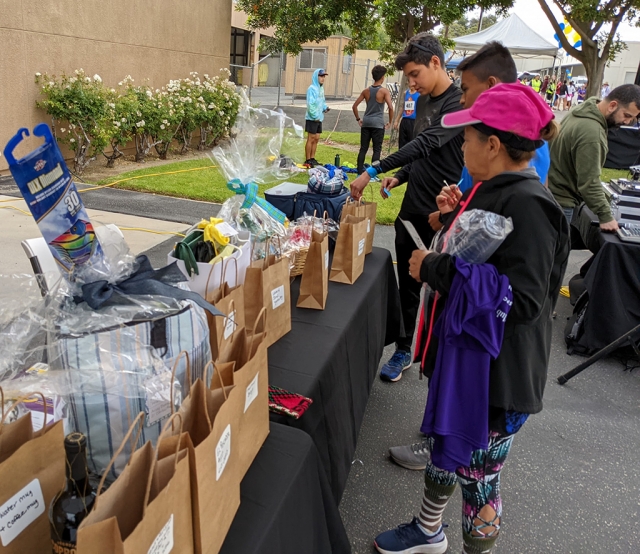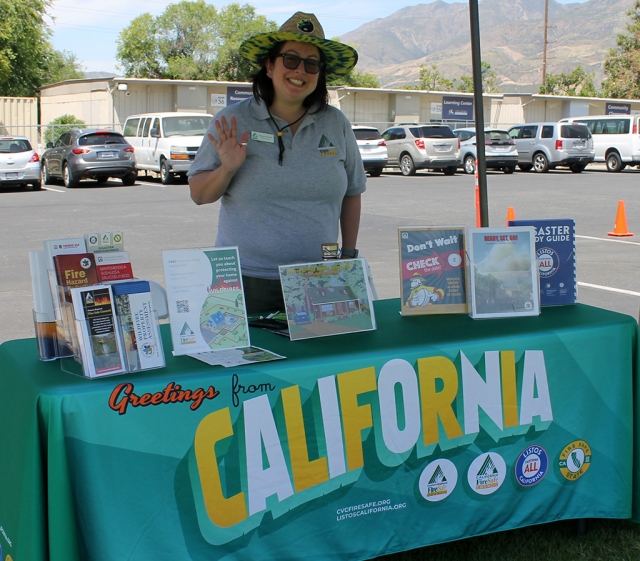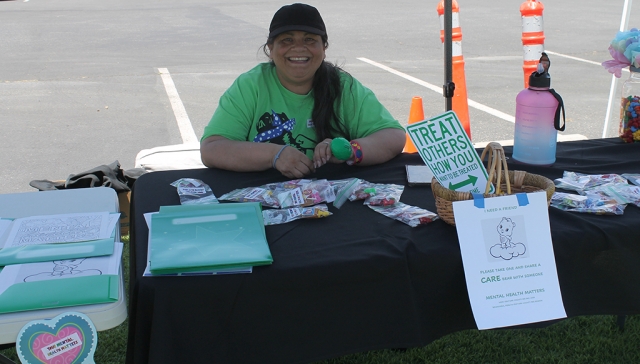 (above) A previous ceremony where Fillmore Boy Scout Troop 406 and Cub Scout Troop 3400 salute for the raising of colors. Photo by Bob Crum. Enlarge Photo By Gazette Staff Writers — Thursday, May 26th, 2022
The Bardsdale Cemetery will hold its Memorial Day Ceremony on Monday, May 30th at 11AM. The featured speaker this year is Jannette Jauregui a 4th generation resident of Santa Paula. She holds a Masters Degree in Journalism and currently serves as Public Information Officer for the Ventura County Agency on Aging. Jannette’s work profiling Ventura County’s military veterans began in 2001 as a freelance journalist with the Ventura County Star. She traveled throughout Ventura County interviewing veterans primarily from World War II. Jannette has profiled more than 220 veterans many of whom have since passed away. While most of the veteran profiles Jannette has completed are in written format she has transitioned to video profiles and continues to seek local veterans to interview. Her goal is to document the personal experiences of veterans before their stories are lost forever. Jannette is the author of four books, including Ventura County Veterans; World War II to Vietnam, Of War and Life; A Decade of Stories, a Man Named Jennings; and Dad’s Song From Heaven. In addition to her current position with the County of Ventura, Jannette served as Media Relations Coordinator and Adjunct Professor for California Lutheran University, Production Assistant and Associate Producer for NBC’s Today, and Writer and Editor for the Pepperdine School for Law. The Reverend Bob Hammond of St. Stephens Anglican Church will give the Inspirational Message and special music will be provided by Alissa Allred Thompson. Also assisting in the ceremony will be VFW Post 9637, Boy Scout Troop 406, Cub Scout Troop 3400 and Bill Morris. The Boy Scouts & Bardsdale 4H will put out the flags on Friday, May 27th and they will be picked up by the Bardsdale 4H on Tuesday, May 31st. The Board of Trustees of the Cemetery District: Lani Farr, President, Lynda Edmonds, Secretary ,Lisa Hammond, Greg Taylor and Bill Morris would like to invite the community to this special event. |
|
By Gazette Staff Writers — Thursday, May 26th, 2022
Courtesy Fillmore Historical Museum During World War II Painter James, a local painter and decorator, invited military personnel and trainees from all around California to be hosted by local families for holidays and weekends. He also created an extensive collection of over 300 photos of Fillmore men and women who were in the military. These photos were displayed in different locations around town including Briggs Hardware Store and the Memorial Building. The collection now hangs in the downstairs hallway of the Fillmore Historical Museum. The Museum volunteers would like to update and add to this collection with photos of local individuals who served during the Korean/ Viet Nam Era or later conflicts. Working from a list of Fillmore/Piru veterans provided by the local Veterans of Foreign Wars we have found corresponding photos in Fillmore High School’s Copa de Oro yearbooks. A few generous residents have shared other photos and materials. If you know someone who was in the military during these conflicts please let us know. We would like to connect with them, see their photos, and hear their stories. Our email is fillmore.museum@gmail.com, or you can call us at 805-524-0948. |
|
By Ventura County Sheriff Department — Thursday, May 26th, 2022
On May 23, 2022, at approximately 1:00 PM, two Fillmore High School students were involved in an alteration on campus. The Fillmore School Resources Officers along with Fillmore patrol officers responded. The altercation led to one of the students stabbing another. The victim was transported to a local hospital with non-life threatening injuries. The suspect was arrested and is currently in custody. There are no additional suspects or any threats toward any other students, staff, or the public. The Fillmore School District works closely with Fillmore Police Department to provide support and safety for the students. The SRO’s close partnership with the high school and the school district staff allowed for the prompt response of patrol units and school support resources for the safety and care of the students. The Fillmore Police Department takes pride its relationship with the Fillmore School District and its schools which led to an efficient and coordinated effort during this incident. Nature of Incident: School Assault Ventura County Crime Stoppers will pay up to $1,000 reward for information, which leads to the arrest and criminal complaint against the person(s) responsible for this crime. The caller may remain anonymous. The call is not recorded. Call Crime Stoppers at 800-222-TIPS (8477). |
|
By Gazette Staff Writers — Thursday, May 26th, 2022
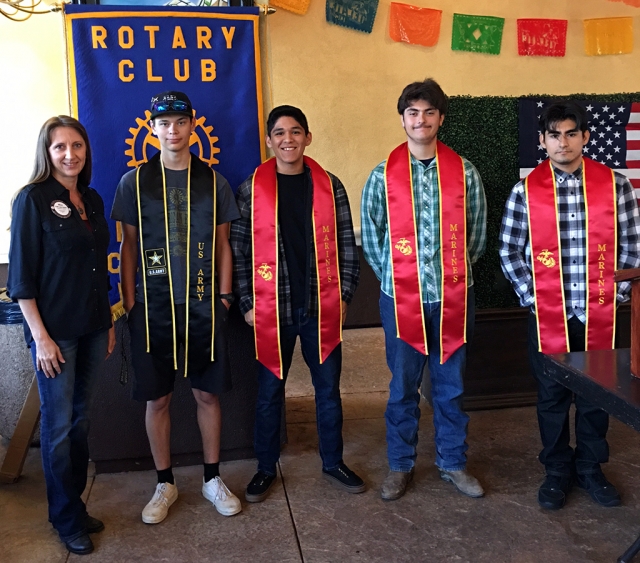 Rotarian Kelli Couse (left) grew up in a military family and because of this she believed the FHS students who decided to join the military, instead of attending college, needed to be recognized. For several years she has presented these students with a special sash, with their branch of the Military, that they can wear at graduation. Starting this year, the Rotary Club of Fillmore has become part of this recognition. Four students and their parents attended the club meeting last week, and were recognized, (l-r) Jordan Pillado-Army, Christian Juarez-Marines, Anthony Ownbey-Marines, and Cristian Cortez-Marines. Photo credit Rotarian Martha Richardson. Enlarge Photo |
|
By Gazette Staff Writers — Thursday, May 26th, 2022
On Sunday, May 15, Sheriff Bill Ayub was recognized as the Community Service Advocate of the Year by the Ventura County Medical Resource Foundation at the 29th Annual Leo Tauber, MD & David Fainer, MD Community Health Care Awards. This year’s award recognized Sheriff Ayub’s instrumental role in implementing and supporting programs that benefit mental health services and the well-being of the community. These programs include VCSO’s Veterans Outreach in Crisis Events (VOICE) program, support of the Youth Reinvestment Grant (YRG) – run in collaboration with local non-profits – to assist youth with support programs and services to stay out of the criminal justice system, and the establishment of VCSO’s Homeless Liaison Unit. As well, Sheriff Ayub was recognized for working in collaboration with Ventura County Behavioral Health, the Ventura County Public Works Agency, the Ventura County Executive Office, and other local area non-profits to find multifaceted solutions to the issue of homelessness in the communities across the county. “I was honored to receive this recognition from the Ventura County Medical Resource Foundation, and I accepted it on behalf of the dedicated women and men of the Sheriff’s Office who consistently provide excellent service to keep our communities safe and on the forefront of innovative public safety practices.” – Sheriff Bill Ayub The annual Ventura County Medical Resource Foundation’s Tauber/Fainer MD Awards recognize outstanding community contributions by those directly involved in the delivery of health care in Ventura County who, through professional, charitable, and public service activities, have demonstrated they exemplify the ideals of generosity, excellence, and integrity. |
|
By Gazette Staff Writers — Thursday, May 26th, 2022
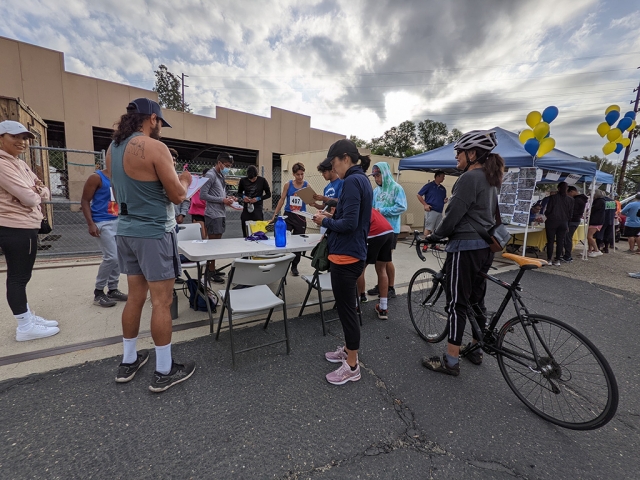 On Saturday, May 21st, Rotary Club of Fillmore hosted a Spring Fling 5/10K Run & Fitness Walk. The run & fitness walk began at 8am in front of the Fillmore Fire Station. After the run, you could grab a snack, relax and enjoy the sounds of a local DJ. There was Bounce House for the kids located at the finish line. There were plenty of awards and raffle prizes for a great day of fun! Photos courtesy https://www.facebook.com/Rotary-Club-of-Fillmore-122596744675 Enlarge Photo |
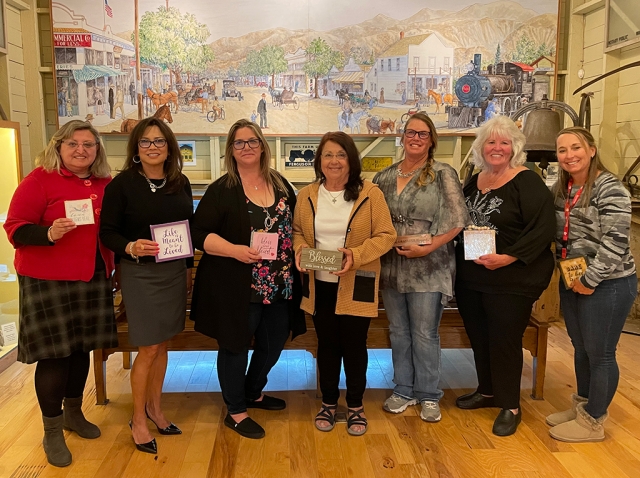 The Fillmore Women’s Service Club’s new officers to serve in the 2022-23 term. (l-r) Houry Meguerditchian, social events; Carina Forsythe, 2nd Vice President; Danielle Quintana, 1st Vice President; Mimi Burns, President; Taurie Banks, Parliamentarian; Pam Smith, 4th Vice President; and Carina Crawford, co-treasurer. Photo by Carina Monica Montoya. Enlarge Photo By Gazette Staff Writers — Thursday, May 26th, 2022
Written by Carina Monica Montoya The Fillmore Women’s Service Club held a new officers installation event and dinner on May 19, 2022 at the Fillmore Historical Museum inside the old train depot. The event was well attended by members and guests. Former President Taurie Banks was honored for her exceptional and extended service. Next meeting will be held on Tuesday, June 7, 2022 at 7:00 p.m., at Tracks, located at 327 Central Avenue, Fillmore. All women interested in membership are welcome to attend the meeting. The Fillmore Women’s Service Club was established in 1964 for the purpose of raising funds to help the community of Fillmore. The Club assists families in need, graduating seniors, women returning to education, school activities, local museums, libraries, and many other community groups. Learn more about the Fillmore Women’s Service Club and see photos of the installation event on Facebook (The Fillmore Women’s Service Club), and at www.fillmorewomensserviceclub.com. |
|
By Gazette Staff Writers — Thursday, May 26th, 2022
Dixie State University recently celebrated the achievements of the institution's largest-ever graduating class of 2,684 degree candidates at the university's 111th Commencement Ceremony. During the ceremony, held on May 6 in Greater Zion Stadium on the DSU campus, the university honored the Class of 2022, with 60 percent receiving bachelor's degrees, 38 percent associate degrees and two percent master's degrees. Candidates ranged from 16 to 79 years of age and included students from 49 states and 15 countries. Of the graduates, 63 percent are female and 37 percent are male. Kasey Crawford from Fillmore was among the graduates recognized at the event. "What a tremendous honor it is to celebrate the achievements of our graduating Trailblazers," Dixie State University President Richard B. Williams said. "Thanks to the experience they have gained through our hands-on educational opportunities, the Class of 2022 is graduating career-ready and will continue to blaze their own trails and make a difference in the world for years to come." The featured speaker at the event was Carly Fiorina, founder and chairman of Carly Fiorina Enterprises and former CEO of Hewlett Packard. From heading several philanthropic organizations, tackling global poverty and promoting female empowerment to leading Hewlett Packard to become the 11th largest company in the U.S. in the midst of the worst technology recession in 25 years and running for president in 2016, Fiorina is recognized as a passionate advocate for problem-solving, innovation and effective leadership. |
|
By Gazette Staff Writers — Thursday, May 19th, 2022
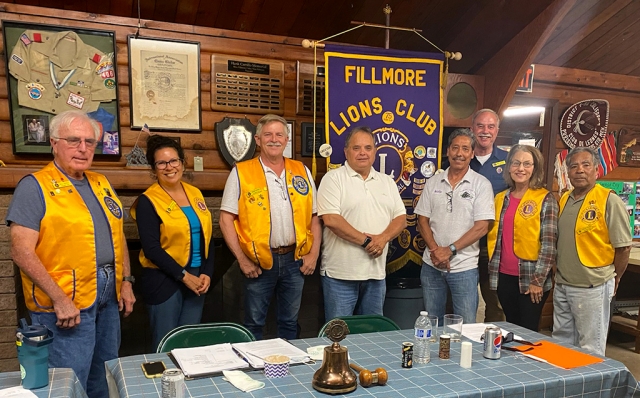 Fillmore’s Ernie Villegas, with the Fillmore-Piru Veteran’s Memorial Foundation, spoke at the Lions Club meeting on May 16th. He spoke about the recent $2.2 million grant that was given to the Foundation. The money will pay for a roof replacement and asbestos remediation, and other improvements such as electrical upgrades, flooring, energy efficient windows, kitchen improvements and more. As part of the grant, there is an agreement with the Ventura County Human Services Department to use the building as an emergency supply center (for example, in the event of an earthquake, fire, floods, etc). Congratulations to the Fillmore-Piru Veteran's Memorial Foundation! For more information on the Fillmore Lions Club, visit www.fillmorelionsclub.org. Enlarge Photo |
|
By Gazette Staff Writers — Thursday, May 19th, 2022
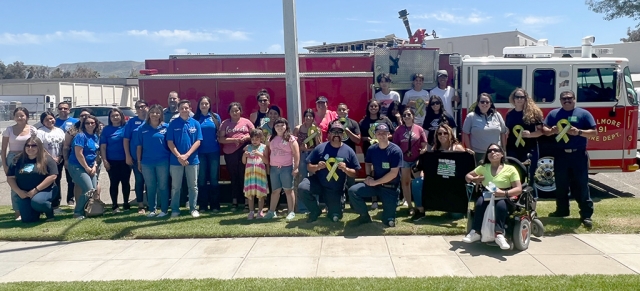 On Saturday, May 14th the Fillmore Health and Wellness Resource Fair was held in front of the Fillmore Unified School District from 11pm to 2pm. There were 20+ resource booths dedicated to serving the community, gathering to promote mental, emotional and physical health and wellness! They had mini-workshops, a COVID-19 vaccine clinic, FFA gave out free grocery boxes, zumba, yoga, books, games, and positivity building activities. The Fillmore Fire Department and Mr. Soffe was in attendance. Above is a group photo of all who participated in this year’s fair. Photo credit Maya Zumaya, Co-Founder of First Responder for Mental Health Initiative. Enlarge Photo 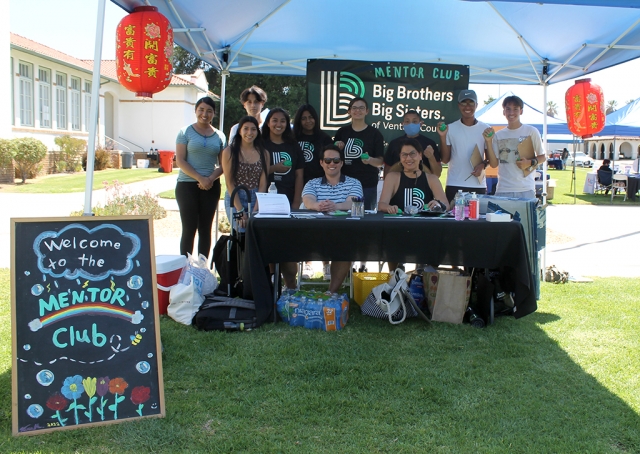 Above is the Mentor Club from Fillmore High School. Students pictured (l-r) are Laura Orozco, David Reyes, Ashley Montiel, Bennedy Ferrerr, Rubi Santa Rosa, Samuel Zneimer (from Ventura County Active Transportation Plan), Kira Martinez, Jose Suarez, Amelia Aparicio (program manager for Big Brothers Big Sisters), Diego Ramirez and Kobe Lizarraga. The team conducted surveys as part of the Ventura County Active Transportation Plan and the information collected will improve transportation in our District 3 community. Enlarge Photo 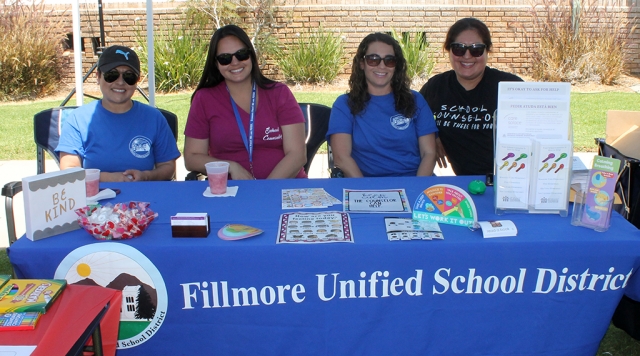 (l-r) Fillmore Unified School District's Saira Fuentes (Piru Elementary Counselor), Sonia Ibarra (Rio Vista Elementary Counselor), Rosanna Lomeli (Special Education Coordinator), and Blanca Mercado (Mountain Vista Elementary Counselor). Each elementary site has a site counselor who supports/helps all students reach their highest potential, attaining transferable skills through their academic, social/emotional, and college/career development. Counselors attended the Health and Wellness Fair to promote school services. Enlarge Photo 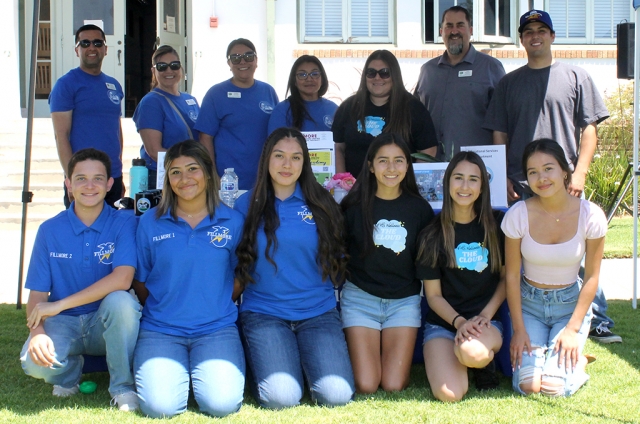 Above are Fillmore Unified Staff, FFA, student helpers, and counselors who attended and participated in the Health and Wellness Resource Fair. Enlarge Photo |


